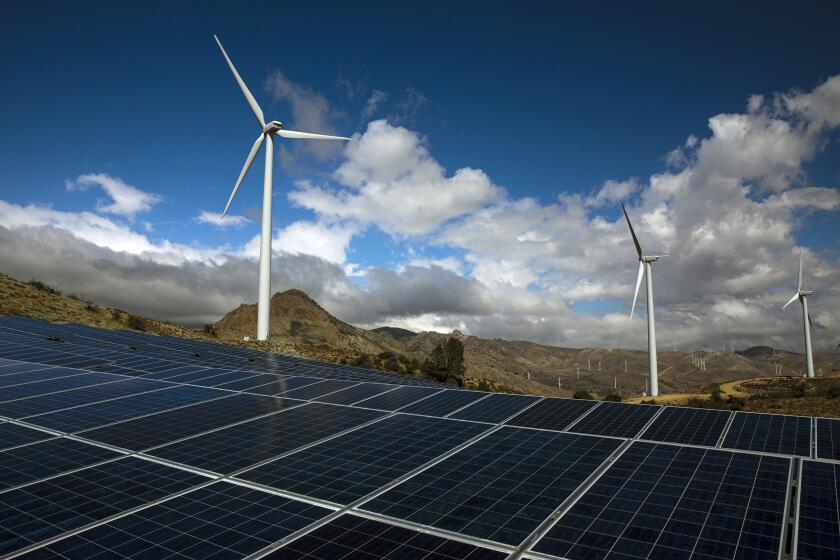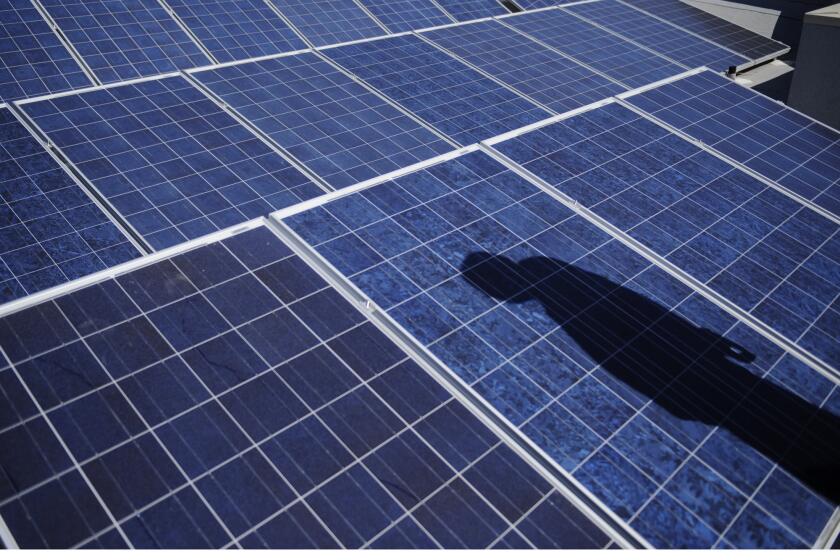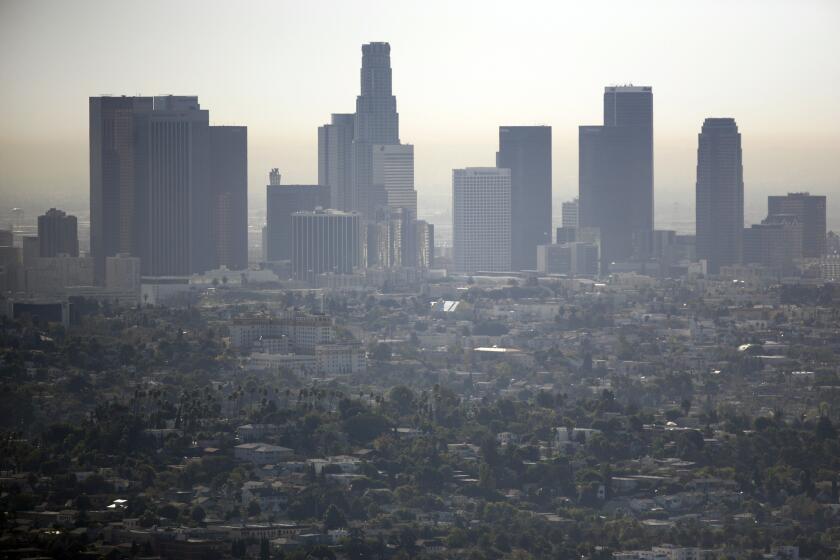California’s next climate challenge: Replacing its last nuclear power plant
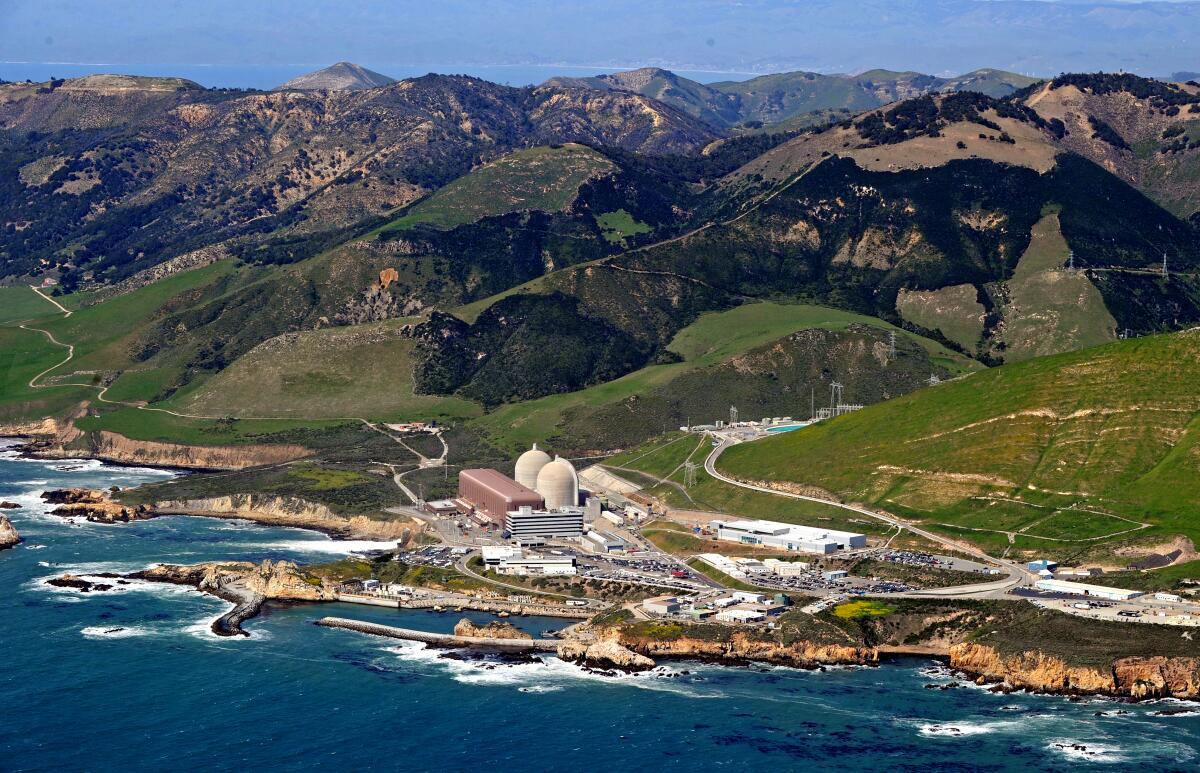
- Share via
The twin reactors along California’s Central Coast were nearing completion, and tens of thousands of people had gathered to protest. It was 1979, just months after a partial nuclear meltdown at Pennsylvania’s Three Mile Island, and a young Jerry Brown — serving his first stint as California governor — earned a standing ovation when he declared, “No on Diablo Canyon.”
Four decades later, Pacific Gas & Electric is finally preparing to shut the nuclear power plant. It sits near several seismic fault lines and has long stirred fears that an earthquake-driven meltdown could spread deadly radiation across the state.
But if Diablo Canyon is the devil Californians know, the devil they don’t know is what happens when it closes.
The plant is California’s largest power source, generating nearly 6% of the state’s electricity in 2019. That energy is emissions-free, meaning it doesn’t produce planet-warming greenhouse gases or lung-scarring air pollutants.
And unlike solar panels and wind turbines, Diablo Canyon can make electricity around the clock, regardless of the weather — a key attribute for a state that suffered brief rolling blackouts last summer.
But with just three years until the plant begins to power down, California has no plan to directly replace it.
That’s despite a state law, overwhelmingly approved by the Legislature and signed by Brown, ordering regulators to “avoid any increase in emissions of greenhouse gases” as a result of Diablo’s closure.
It’s common for nuclear shutdowns to be followed by a jump in pollution as fossil fueled power plants fire up more often.
California’s planet-warming emissions rose by 2% after the San Onofre generating station in San Diego County malfunctioned, eventually leading to its permanent closure. That wasn’t the only reason emissions rose, but it was almost certainly a factor.
Similarly, the share of New York state’s electricity coming from natural gas, a fossil fuel, rose by 4 percentage points after one of two reactors at the Indian Point nuclear plant closed last year. The other reactor produced its final electrons last month.
It doesn’t have to be that way, and Diablo Canyon was supposed to be a model of how to retire a nuclear plant without worsening the climate crisis. But critics say Gov. Gavin Newsom’s Public Utilities Commission is failing in that mission.
“Diablo’s retirement is going to increase greenhouse gas emissions. And their planning is not doing anything to prevent that,” said Mark Specht, an energy analyst at the Union of Concerned Scientists. “We should have figured this out by now.”
Your guide to our clean energy future
Get our Boiling Point newsletter for the latest on the power sector, water wars and more — and what they mean for California.
You may occasionally receive promotional content from the Los Angeles Times.
The future of nuclear power is a key question not only for California, but nationally. America has 93 nuclear reactors across 28 states. They generate one-fifth of the country’s electricity — as much as all other climate-friendly power sources combined.
President Biden’s ambitious goal of 100% clean energy by 2035 — a decade ahead of California’s current target — would be much easier to meet if those plants kept operating. But many could be forced to close in coming years, as their operators struggle to compete with increasingly cheap electricity from natural gas plants as well as solar and wind farms.
Should government toss an economic lifeline to those nuclear reactors? There are fervent advocates on both sides of the debate.
One of the best-known pro-nuclear figures is Michael Shellenberger, who ran for California governor in 2018 and more recently has decried “climate alarmism” and made appearances on Fox News. Other nuclear proponents include the distinguished climate scientist James Hansen, who in 1988 famously warned Congress that “the greenhouse effect is here,” as well as Bill Gates, who has invested in what he hopes will be next-generation nuclear technologies.
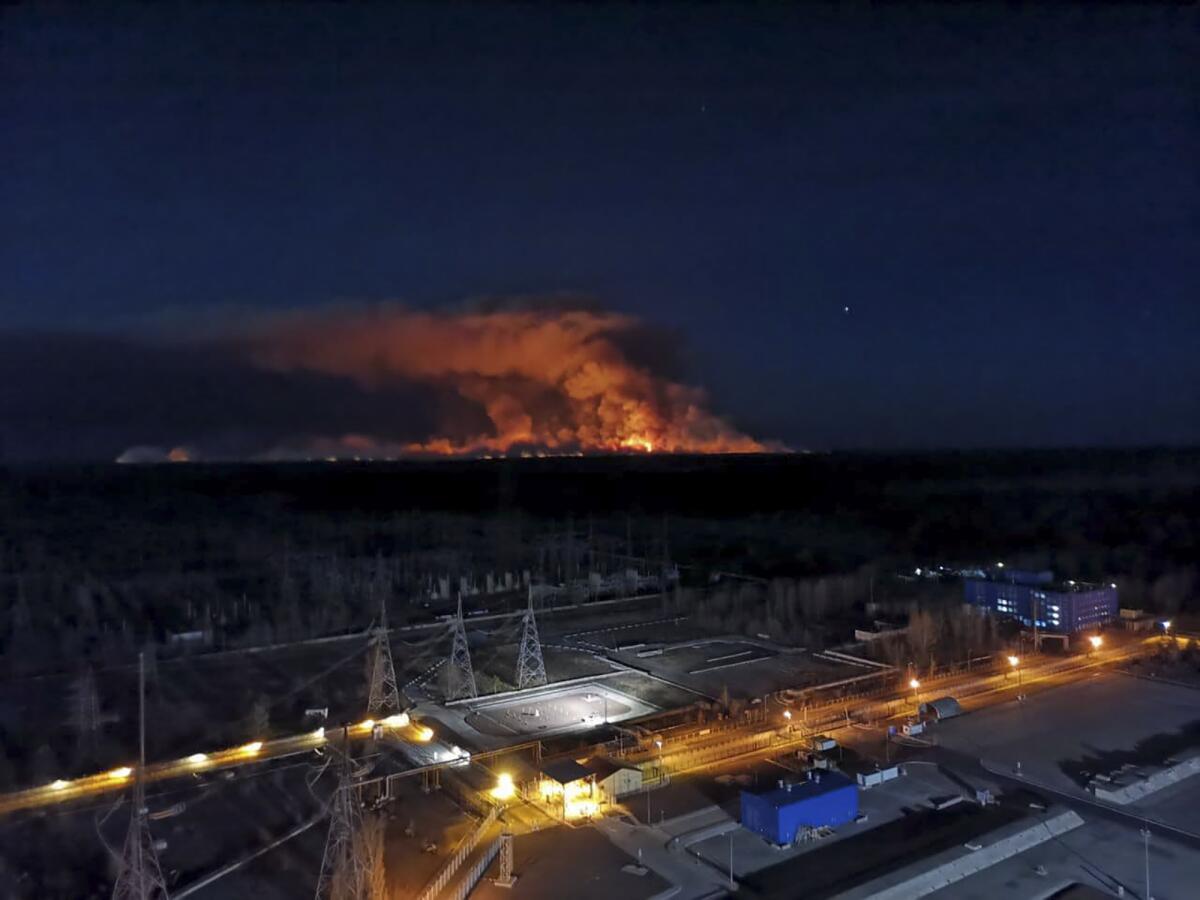
On the other side are old-school environmentalists shaped by the Chernobyl disaster and the cancer-causing radiation it spread, as well as younger activists who remember the Fukushima Daiichi meltdowns and see uranium as just another dangerous fuel to be thrown on the scrap heap with coal, oil and gas.
The Sierra Club says it is “unequivocally opposed to nuclear energy.” Food and Water Watch calls nuclear a “false solution” that isn’t needed to transition away from fossil fuels.
Groups including the Natural Resources Defense Council have staked a middle ground, opposing construction of new reactors while sometimes supporting policies that would prop up existing plants, at least in places with relatively low safety risks.
The Biden administration, too, wants to see existing plants keep running. Energy Secretary Jennifer Granholm told Congress this month that the administration is “eager” to work with lawmakers on subsidies for economically struggling reactors.
“We’re not going to be able to achieve our climate goals if our nuclear power plants shut down,” Granholm said.
The plan would help fight climate change and reduce deadly air pollution from cars, trucks and power plants and gas furnaces.
A ‘lack of urgency’ in California
When nuclear plants do shut down, climate advocates agree that replacing them with clean energy sources is crucial.
That’s the problem in California, where officials acknowledge the state is likely to burn more gas after Diablo goes offline.
In a recent report studying the possible closure of the Aliso Canyon gas storage facility outside Los Angeles, the Public Utilities Commission cited Diablo’s retirement as one of several reasons gas demand is expected to increase in the coming years.
For Assembly member Jordan Cunningham (R-Templeton), who co-wrote the law ordering regulators to make sure emissions don’t rise after the plant’s closure, it’s inexcusable that the Public Utilities Commission doesn’t have a dedicated plan do so.
“I don’t know if it’s a lack of urgency, or it’s just a slow-moving bureaucracy, or they just move from crisis to crisis,” Cunningham said. “So much of energy policy moves through the PUC, and they just don’t move very fast. And it’s frustrating.”
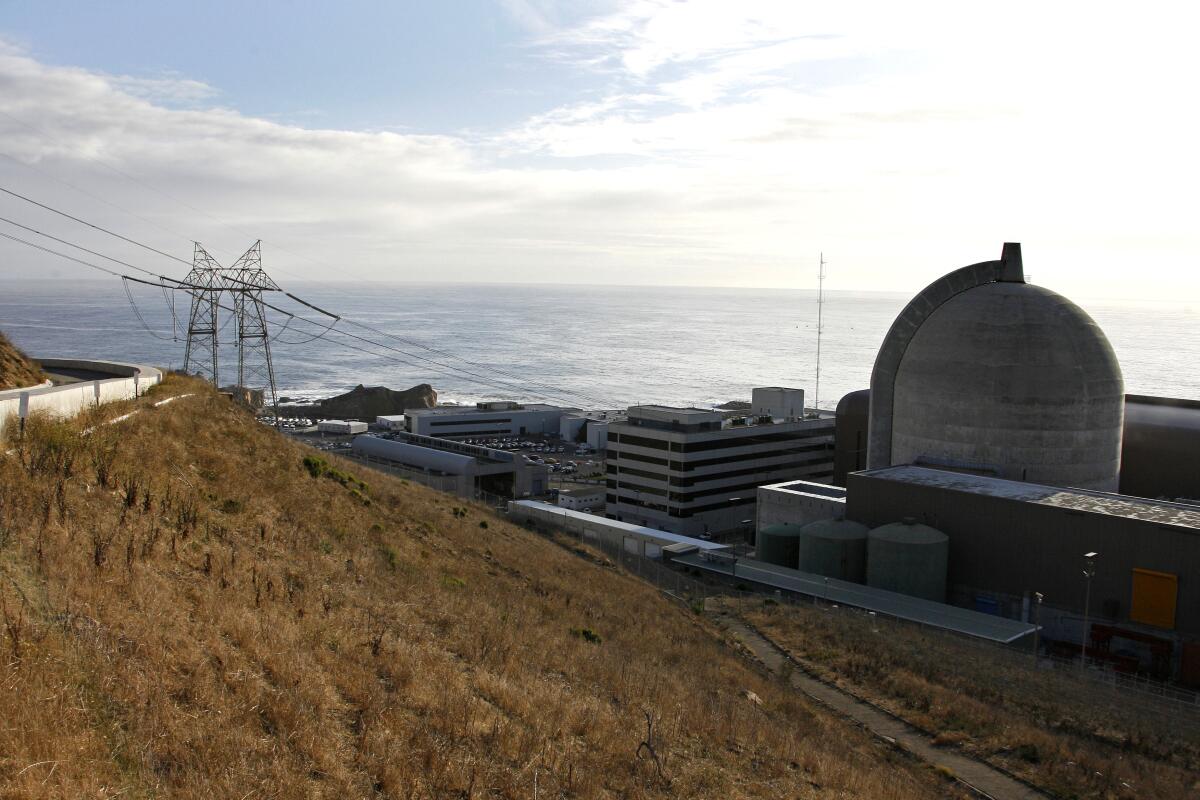
The Union of Concerned Scientists released a report in February examining what might happen if Diablo closes without a plan to replace its output. The group estimated California would emit an additional 15.5 million metric tons of planet-warming carbon over the next decade — roughly equivalent to keeping 300,000 gasoline-powered cars on the road over that same time period.
Nitrogen dioxide pollution, which can cause asthma attacks and reduced lung function, would also rise in communities near gas-fired power plants. The added pollution would be equivalent to operating 1,750 diesel school buses, the report found.
The Public Utilities Commission says it’s following the law.
Ed Randolph, the agency’s director of energy and climate policy, described the lack of a plan to replace Diablo Canyon as a perception problem, not an emissions problem. He said carbon pollution is falling and will continue to fall, with solar and wind farms coming online every year that will help pick up the slack after Diablo closes, even if they weren’t built specifically to replace its output.
Those new power plants won’t start generating electricity at the exact moments in 2024 and 2025 when Diablo’s reactors go offline. But they’re still basically serving as replacements, Randolph said — even if there’s a short-term “bump” in emissions.
“You may see a slight uptick the next couple years, and then you see a decrease again,” he said.
Cunningham wasn’t impressed with that explanation.
“I don’t find that that’s compliant with their legal mandate,” the lawmaker said.
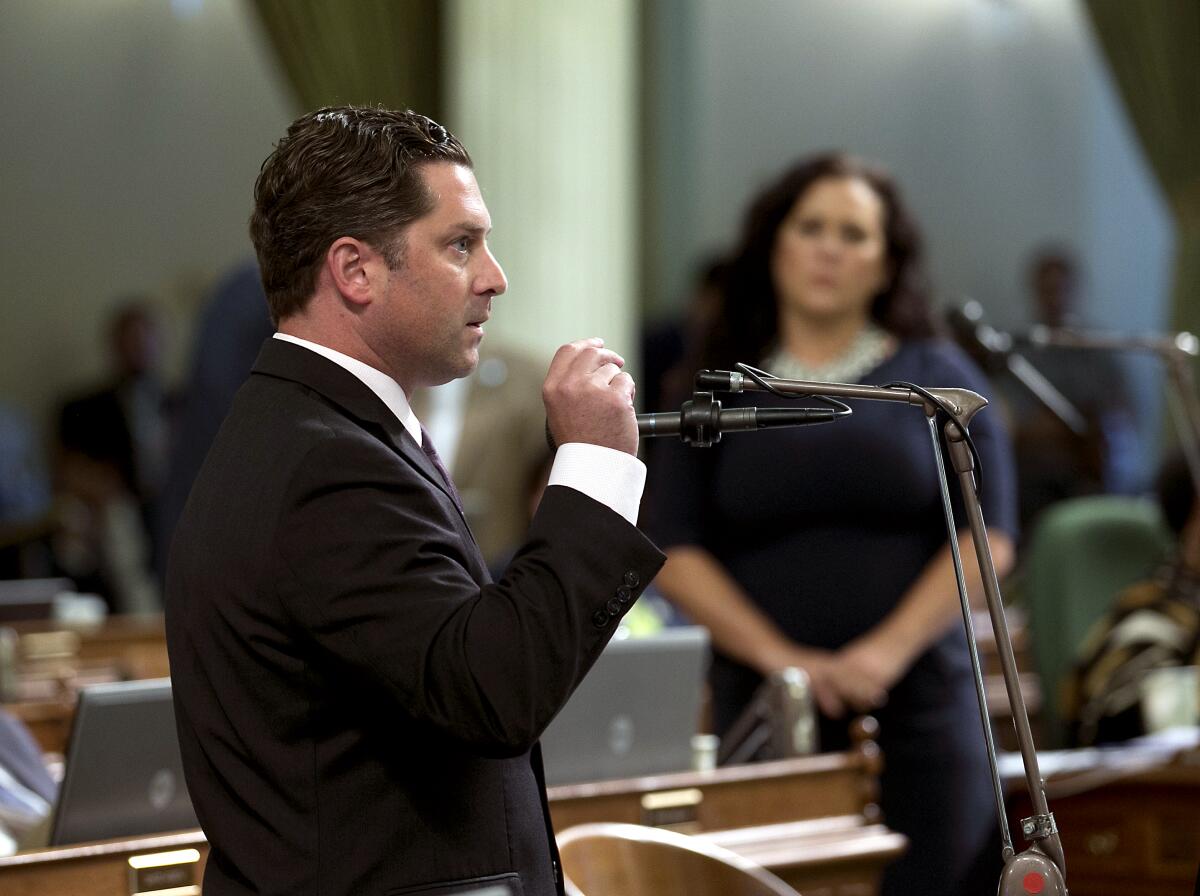
The utilities commission recently began talking about building new power plants explicitly to replace Diablo Canyon — but largely out of fear that California could have trouble keeping the lights on otherwise, an urgent concern following rolling blackouts last August.
In a proposal released in February and not yet finalized, commission staff floated the idea of ordering utility companies and local governments to buy 7,500 megawatts of new power by 2026. Those supplies would help replace Diablo’s nearly 2,300 megawatts, as well as several coastal gas plants that were supposed to shut down last year before getting a last-minute reprieve.
The new resources probably would include solar and wind farms paired with batteries that store energy for times when the sun isn’t shining and the wind isn’t blowing. The commission might also require utilities and local governments to sign contracts with geothermal power plants and “long duration” energy storage facilities that can help keep the grid balanced 24/7.
Supplying enough power on hot summer evenings is one of California’s main challenges. But experts say there solutions.
At the same time, commission staffers say it’s important not to build too much, too fast. Electricity rates are already rising as PG&E and Southern California Edison spend large sums of money to prevent their electric lines from sparking fires.
“Is this an unprecedented buildout? Yeah,” Randolph said. “But we don’t think it’s an unrealistic buildout.”
Some observers think 7,500 megawatts isn’t enough. The California Independent System Operator — which runs the power grid for most of the state and initiated last year’s rolling blackouts — says 10,000 megawatts are needed.
The California Environmental Justice Alliance and the Sierra Club have an even more dramatic proposal.
They’re urging the Public Utilities Commission to order 20,000 megawatts of new clean power supplies by 2026, which would amount to one-quarter of the state’s entire generating capacity today. A “significant percentage” of that clean energy, they say, should be built in the Los Angeles Basin and the San Joaquin Valley, regions with notoriously smoggy, asthma-inducing air.
That would enable California to not only replace Diablo, the groups say, but also shut down additional gas plants in low-income communities of color. A recent study from Harvard researchers highlighted the potential benefits, estimating that gas burned at power plants and other industrial facilities caused more than 1,000 premature deaths in the Golden State in 2017.
Poor air quality has put Black people and Latinos at greater risk from the coronavirus, in Los Angeles and across the country.
Those kinds of health consequences show that Californians can’t afford any “bump” in emissions when Diablo closes, said Deborah Behles, an attorney representing the California Environmental Justice Alliance.
“Not only is that bump problematic for climate change, it’s also problematic for disadvantaged communities that are already breathing some of the worst air in the country,” she said.
There’s little appetite in Sacramento for reversing course on Diablo Canyon, even as California struggles to build a cleaner, more reliable power grid.
A bill from Cunningham, which would have counted nuclear toward the state’s renewable energy mandate in a longshot bid to keep the plant running, died last year without getting a committee vote. Operating Diablo past 2025 would also require billions of dollars of upgrades to comply with environmental and earthquake safety rules, Randolph said.
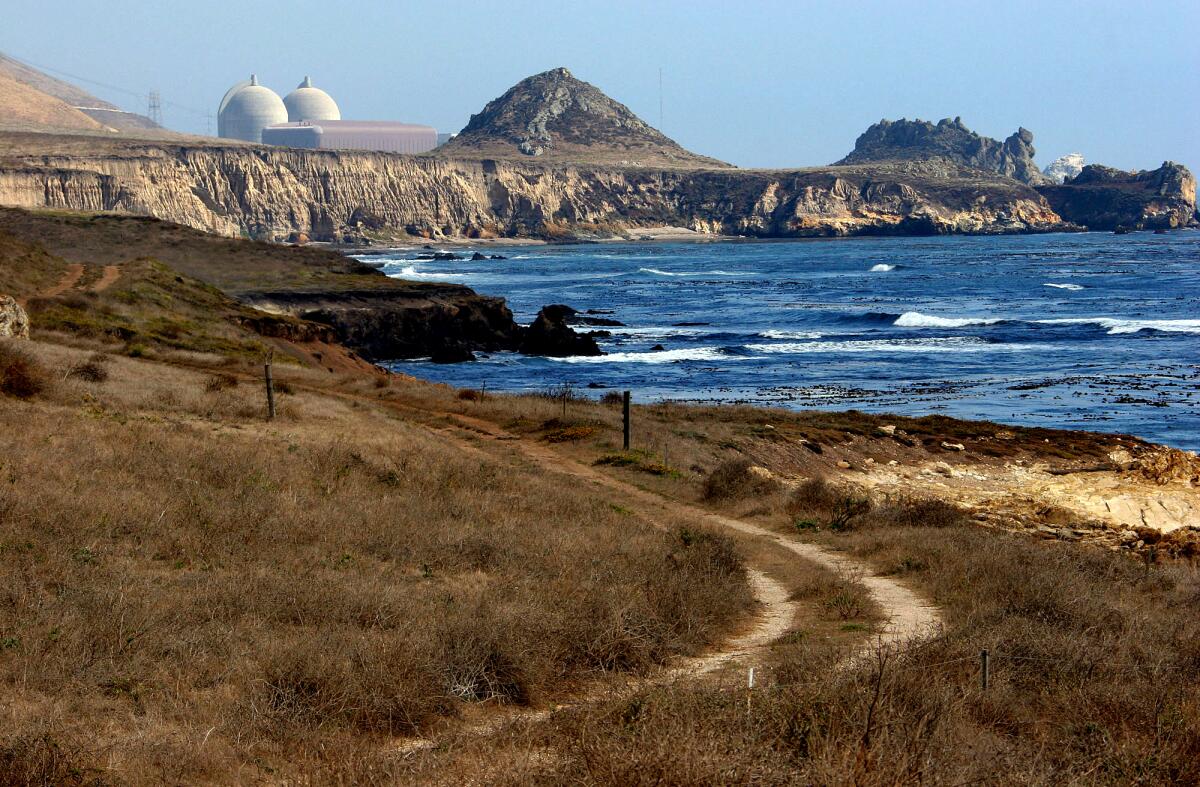
Nuclear’s next generation
Utilities in other parts of the country haven’t shown much appetite for new nuclear power plants, either. The only reactors currently under construction, at Southern Co.’s Vogtle power plant in Georgia, are five years behind schedule and billions of dollars over budget.
Many nuclear advocates have placed their hopes in so-called “small modular reactors,” which in theory would be cheaper, easier to build and safer than their hulking Cold War-era predecessors.
Startups such as Kairos, NuScale Power and Oklo are working to develop and prove the technology. The federal Department of Energy last fall awarded $160 million in advanced reactor funding to two companies, TerraPower and X-energy, with a goal of helping them get demonstration projects built by 2027.
Jessica Lovering, co-founder of the pro-nuclear research group Good Energy Collective, thinks the technology’s backers should focus on environmental justice — ensuring cleaner air, water and soil in neighborhoods suffering the most from pollution.
In a recent essay, Lovering and her colleagues laid out what “nuclear justice” might look like. They called for the cleanup of still-contaminated atomic weapons sites such as Hanford in Washington state and Santa Susana in the San Fernando Valley, as well as action to address pollution from decades of uranium mining, such as groundwater contamination on the Navajo Nation.
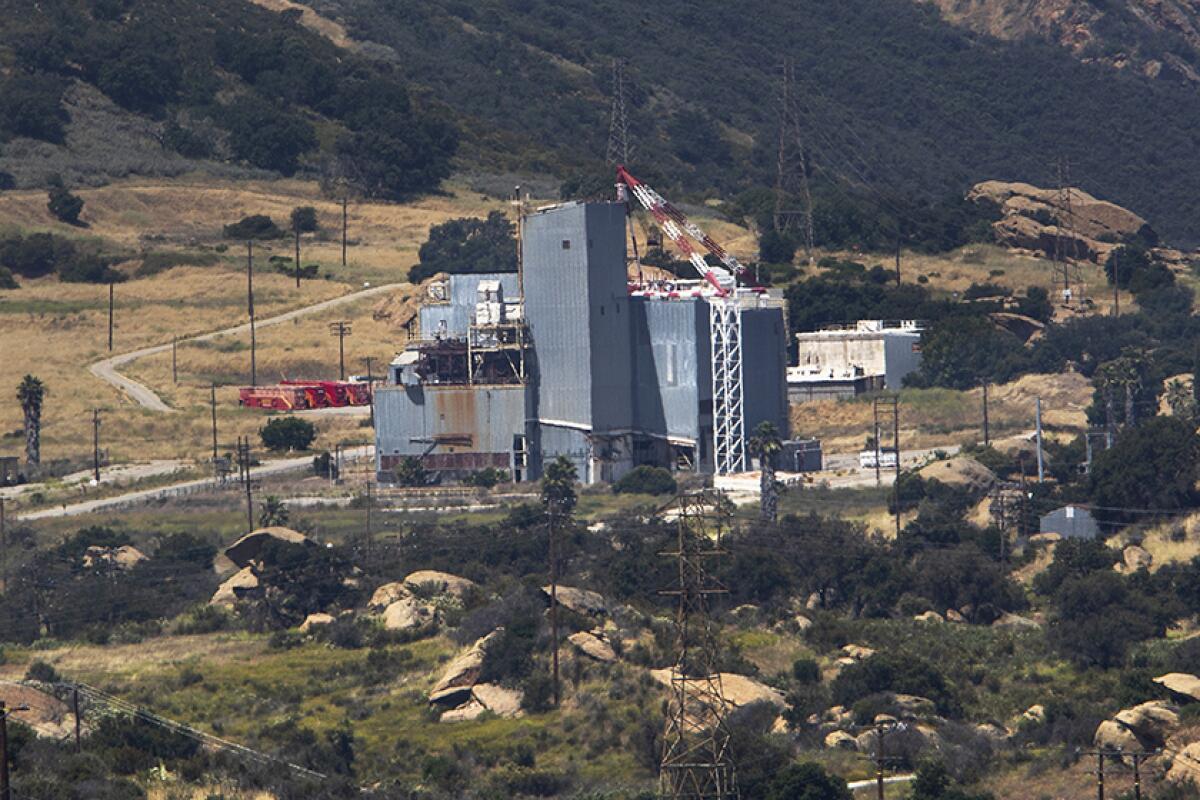
Nuclear energy companies, meanwhile, could look to build small reactors in pollution-burdened areas that previously depended on fossil fuels for well-paying jobs — but only if that’s something local residents want. That would be a change of pace from the wave of nuclear development in the 1960s and 1970s, when many reactors were built near whiter, wealthier suburbs, while dirtier uranium mining and processing facilities were typically located near communities of color, Lovering said.
“There’s a discrepancy between who’s bearing the risk and who’s getting these economic benefits,” she said.
Only by confronting its problematic legacy, Lovering believes, can the nuclear power industry build trust and convince skeptics it’s worth rethinking their decades-old aversion to atomic energy.
“For me personally, and for a lot of people my age, the big existential crisis is climate change,” she said. “So if there is this tool that has had a lot of problems in the past — but it looks like there are answers to those problems, and new [advances] that make the technology much better — we should at least be considering it, and not taking it off the table.”
Support our journalism
Your support helps us deliver the news that matters most. Subscribe to the Los Angeles Times.
Edwin Lyman is skeptical.
He’s the director of nuclear power safety at the Union of Concerned Scientists, and he recently wrote a report questioning whether new reactor designs will really deliver the safety improvements their backers are promising. He also disagrees with the claim made by nuclear advocates that the technology is far safer than fossil fuels, saying it fails to account for radiation leaks that don’t lead to immediate death but can still cause cancer — a notion that is fiercely disputed by nuclear supporters.
Another hurdle is where to bury the waste produced by nuclear plants, which can remain radioactive for tens of thousands of years.
The proposed Yucca Mountain facility in Nevada was nixed by the Obama administration and again by President Trump. For now, nuclear waste is being stored on-site at operating and shuttered plants, including San Onofre.
“If we have to create a national sacrifice zone to get rid of the stuff or bury it, that’s not a great model for the future,” Lyman said.
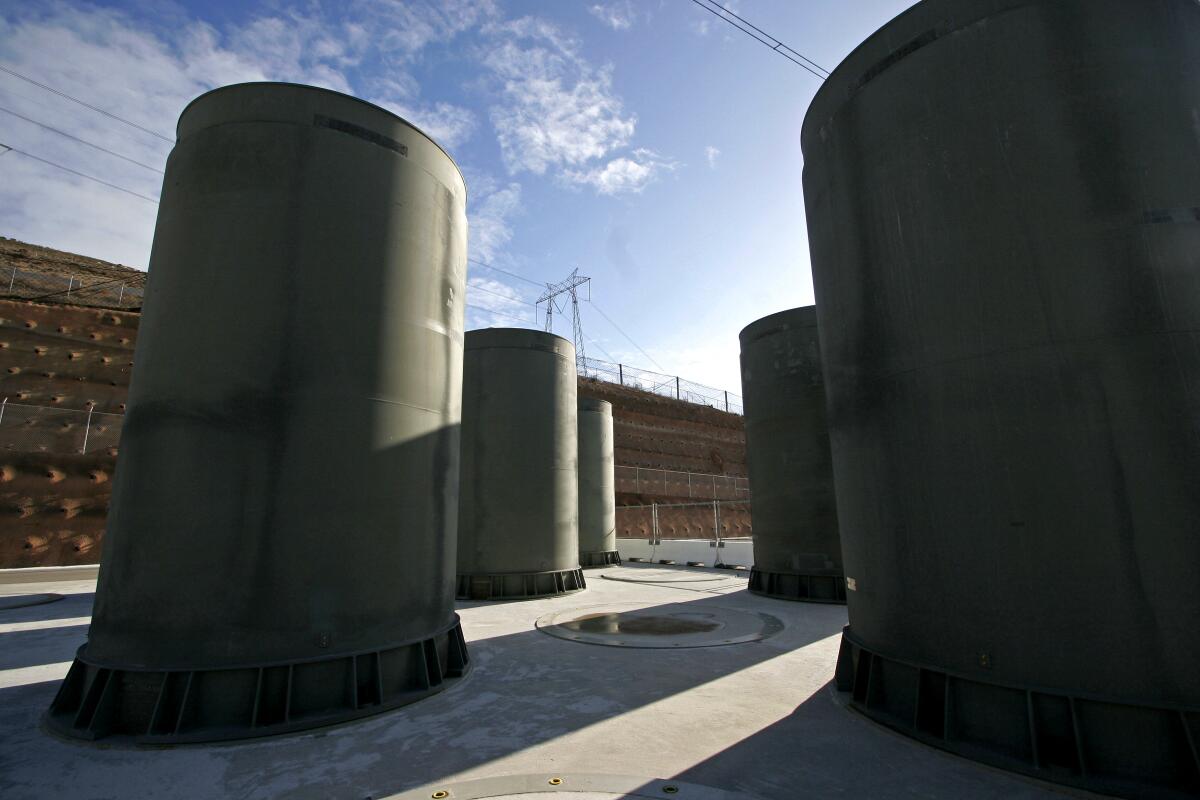
Lyman thinks it makes sense to subsidize nuclear plants in danger of shutting down, if the alternative is burning more fossil fuels — but only if those plants are relatively low-risk. He supports retiring Diablo Canyon because of the earthquake threat.
”We’re not trading climate change for nuclear safety,” he said.
PG&E has long said Diablo would withstand a major quake. And nuclear energy proponents point to research suggesting the health impacts from incidents such as Three Mile Island and Fukushima Daiichi were small — especially compared with a recent estimate from Harvard scientists that fine-particle pollution from fossil fuels killed more than 8 million people in 2018 alone.
But for better or worse, after a half-century of anti-nuclear activism, California has made its choice on atomic energy.
Come 2025, the state’s last nuclear power plant will almost certainly go offline, joining retired reactors at San Onofre and the Rancho Seco plant near Sacramento, which closed in 1989 after a public vote.
Los Angeles and several nearby cities will still get power from Arizona’s Palo Verde nuclear plant, the country’s largest electricity generator, as will Southern California Edison. But nothing new is on the horizon.
Brown continued his anti-nuclear activism even after his second stint as governor. He’s now executive chairperson of the Bulletin of the Atomic Scientists, whose iconic Doomsday Clock warns of the threats posed by nuclear weapons and climate change.
“They both have catastrophic consequences,” Brown said in 2015.
There’s a big difference between nuclear bombs and nuclear power plants. But no energy source is risk-free. The question today, as temperatures rise and radioactive waste decays, is whether the climate catastrophe makes uranium worth the risk.

More to Read
Your guide to our clean energy future
Get our Boiling Point newsletter for the latest on the power sector, water wars and more — and what they mean for California.
You may occasionally receive promotional content from the Los Angeles Times.
